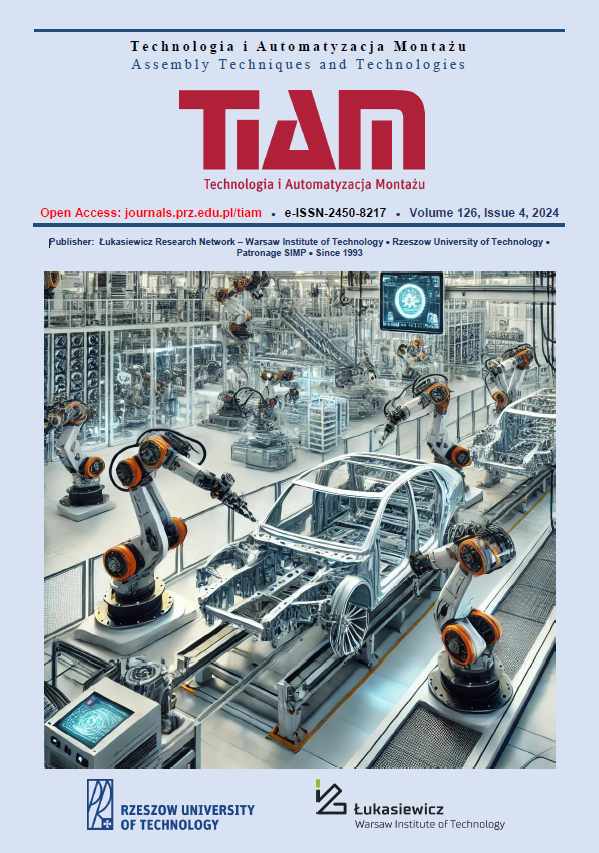Abstract
Various types of bushings or pins are widely used in the machinery industry, i.e. in the automotive industry, agricultural machinery and production lines. Such machine components operate in a diverse environment, not infrequently in polluted or dusty environments and these components may be subjected to intensive wear. Particles circulating in various types of machine kinematic pairs contribute to accelerated or even emergency wear of the equipment. One way to prevent such dangerous failures is to use an additional machining to create dimples in the surface, which are a place to collect lubricant but also abrasive particles. The article presents a method of burnishing a cylindrical surface after carburizing treatment and after hardening, after which the hardness of the surface layer was about 60 HRC. As a result of using appropriate tools, it was possible to create regular and reproducible dimples in the surface. A surface topography parameter was also proposed, which makes it possible to evaluate the increase in oil capacity of the created cavities quickly and with high quality standards.
References
Andersson P., Koskinen J., Varjus S., Gerbig Y., Haefke H., Georgiu S., Zhmud B., Buss W. (2007). Microlubrication effect by laser-textured steel surfaces. Wear 262, 369-379.
Dumitru G., Romano V., Weber H. P., Haefke H., Gerbig Y., Pfuge E. (2000). Laser microstructuring of steel surfaces for tribological applications. Applied Physics A 70, 485-487.
Etsion I., Halperin G., Becker E. (2006). The effect of various surface treatments on piston pin scuffing resistance. Wear 261, 785-791.
Gałda L. (2008). Influence of burnished lubricating micro-pockets on tribological properties of sliding elements. Doctoral thesis, Rzeszów.
Gałda L., Sęp J., Prucnal S. (2016). The effect of dimples geometry in the sliding surface on the tribological properties under starved lubrication conditions. Tribology International 99, 77-84.
Gałda L., Dzierwa A., Pawlus P., Reizer R. (2011). Improvement of tribological properties of co-acting elements by oil pockets creation on sliding surfaces. Meccanica 46, 523–534.
Gałda L., Dzierwa A., Sęp J., Pawlus P. (2010). The effect of oil pockets shape and distribution on seizure resistance in lubricated sliding. Tribology Letters 37, 301–311.
Nosal S. (1998). Tribological aspects of seizure of sliding pairs. Dissertations no. 328, Poznan University of Technology Publishing House, Poznań.
Nosal S. (2002). Influence of the degree of mutual overlap on adhesive seizure. Tribologia 4, 1261 -1266.
Gałda L., Koszela W. (2018). Tool head for the fabrication of a sliding pair, especially a mono-material one. Patent PL no. 230836.
PN-EN ISO 683-3:2022-07. Heat-treatable steels, alloy steels and free-cutting steels -- Part 3: Case-hardening steels.
https://akrostal.pl/stale/16hg-1-7131-16mncr5/ (access on 28.06.2024)
Gałda L., Pająk D. (2022). Analysis of the application of SiC ceramics as a tool material in the slide burnishing process. Technologia i Automatyzacja Montażu, vol. 1, 45-57. DOI: 10.7862/tiam.2022.1.5


